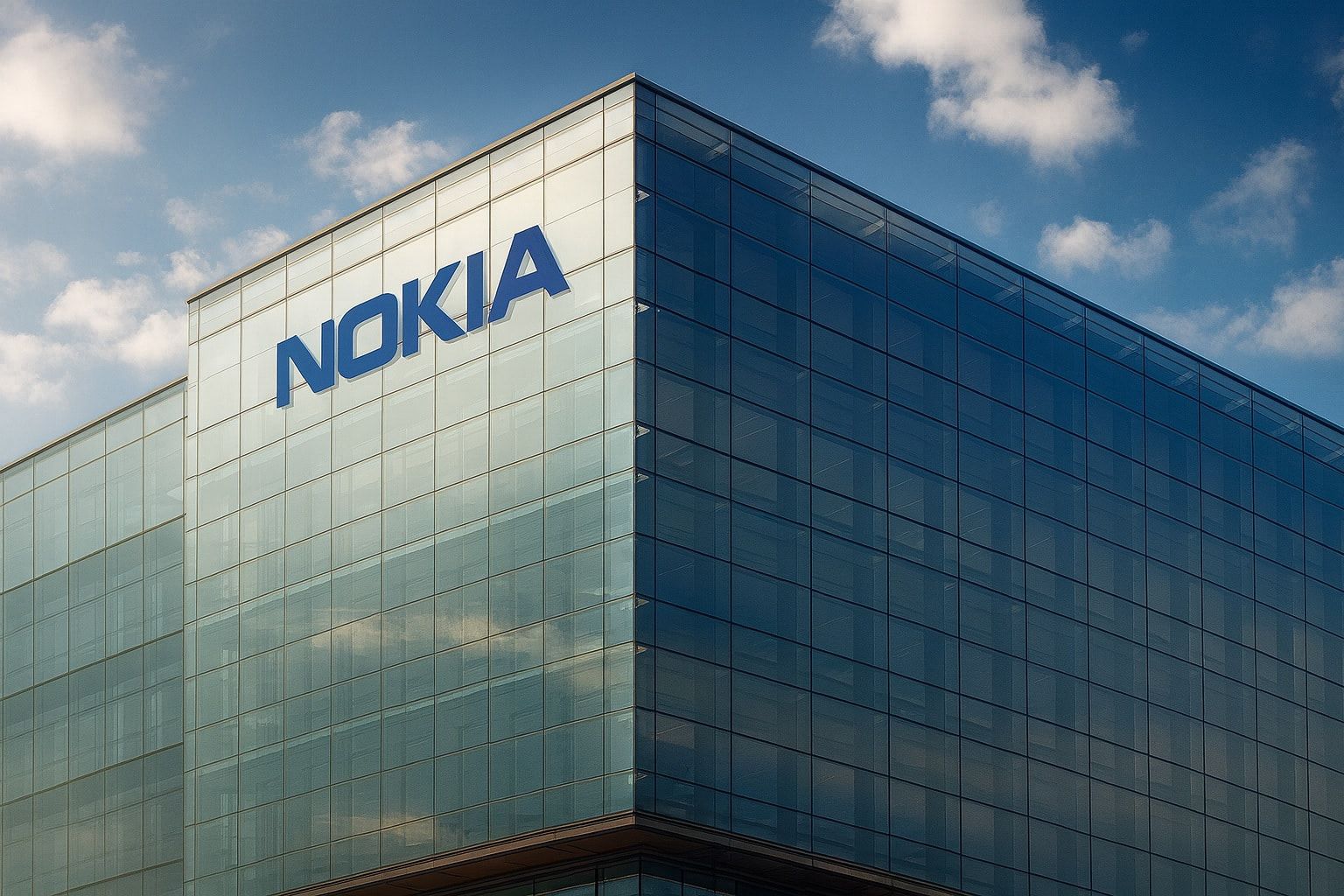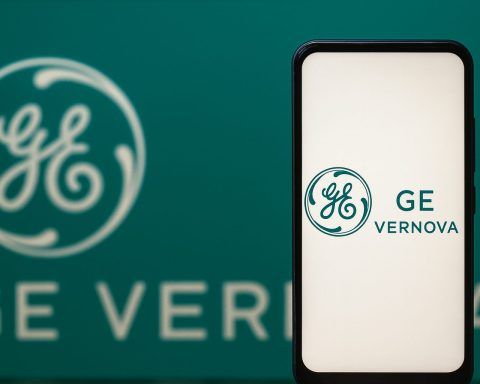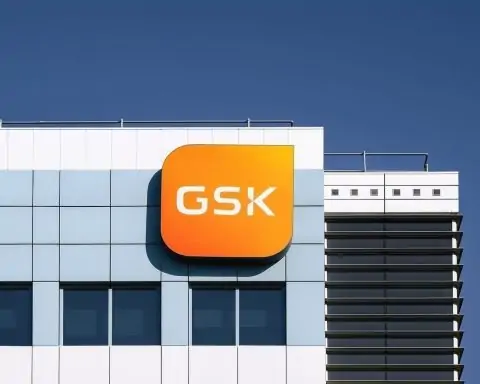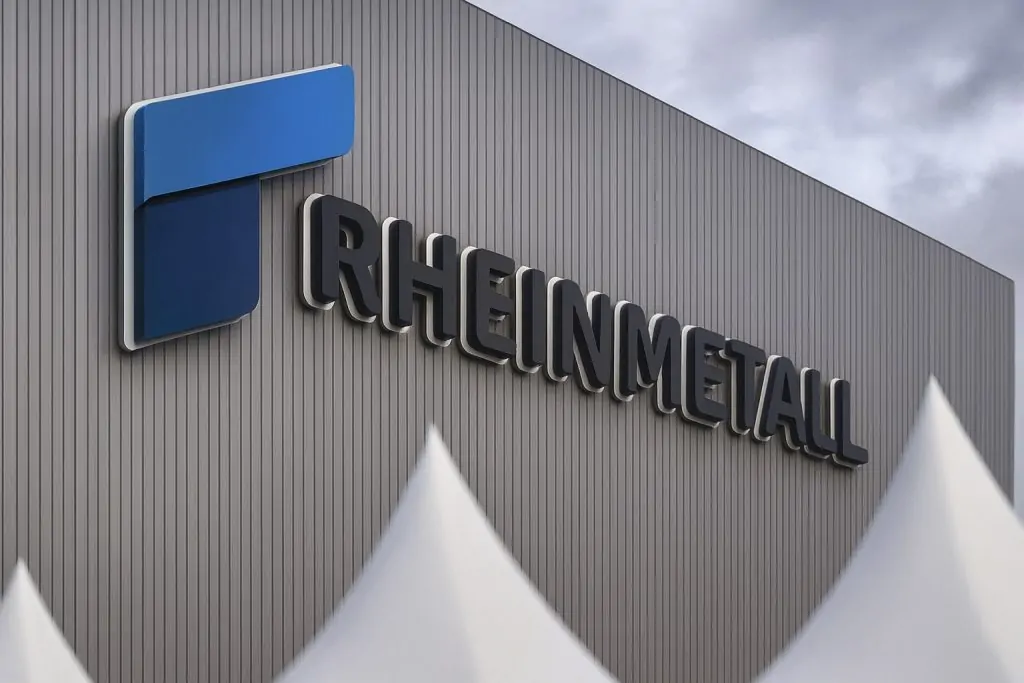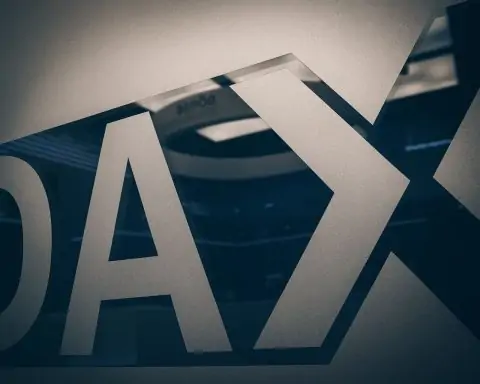On 19 November 2025, Nokia Oyj used its long-awaited Capital Markets Day in New York to unveil a sweeping AI‑centric strategy, a new 2028 profit target and a major overhaul of its operating model — and investors immediately weighed in. The company is promising a step‑change in profitability and tighter focus on AI infrastructure, but Nokia’s shares fell sharply as markets digested the details. [1]
By late afternoon in Helsinki, Nokia’s stock was down around 7.8% at about €5.21, while the New York‑listed ADRs traded near $6.07, off roughly 8.6% on the day, according to the company’s own investor site. [2]
New AI‑First Strategy and Ambitious 2028 Profit Target
At the heart of today’s announcements is Nokia’s push to position itself as a core enabler of the “AI supercycle” — the wave of investment in data centers, cloud and next‑generation connectivity needed to support AI workloads. [3]
Nokia set a new long‑term financial target to reach comparable operating profit of €2.7–3.2 billion by 2028, up from about €2.0 billion over the last four reported quarters (Q4 2024–Q3 2025). Reuters notes the top of that range represents up to roughly 60% improvement versus the recent 12‑month level. [4]
To support this, Nokia laid out strategy‑linked KPIs for its main businesses: [5]
- Network Infrastructure
- Net sales CAGR of 6–8% between 2025 and 2028
- Operating margin target of 13–17% by 2028
- Mobile Infrastructure
- Gross margin target of 48–50% by 2028
- Operating profit to grow from a current base of around €1.5 billion
- Group “Common and Other”
- Operating expenses to be cut from roughly €350 million to €150 million by 2028
- Free cash flow conversion
- Target 65–75% of comparable operating profit
Nokia stresses that these are strategic KPIs and not part of its formal group‑level financial outlook, but they are meant to show how the AI‑oriented strategy is expected to translate into earnings and cash generation. [6]
Five Strategic Priorities: From AI & Cloud to 6G
CEO Justin Hotard framed the overhaul as Nokia “connecting intelligence” rather than just people — a shift from pure connectivity to AI‑ready infrastructure. Nokia’s new strategy is structured around five priorities: [7]
- Accelerate growth in AI & Cloud – targeting fast‑growing data center and cloud customers.
- Lead the next era of mobile connectivity with AI‑native networks and 6G – evolving beyond 5G into more autonomous, software‑driven networks.
- Grow by co‑innovating with customers and partners – deeper joint development with hyperscalers, operators and enterprises.
- Focus capital where Nokia can truly differentiate – prioritising optical, IP, and advanced radio technologies.
- Unlock sustainable returns – aligning the portfolio and cost base to deliver higher, more consistent profitability.
This framing closely mirrors how investors already talk about AI infrastructure: whoever controls the fiber, routing, and radio layers powering AI data centers and edge compute stands to benefit from multi‑year capex cycles. [8]
From Four Segments to Two: Network vs. Mobile Infrastructure
To execute the strategy, Nokia will collapse its current four main segments into two primary operating segments starting 1 January 2026: [9]
- Network Infrastructure – treated explicitly as a growth engine
- Business units: Optical Networks, IP Networks, Fixed Networks
- Focus: AI and data‑center build‑outs as well as traditional telecom customers
- Mobile Infrastructure – focused on mobile and core networks
- Business units: Core Software, Radio Networks, Technology Standards
- Focus: AI‑native mobile networks, 5G/6G evolution and monetization of Nokia’s standards/IP
Network Infrastructure will continue to be led by David Heard, while Justin Hotard will lead Mobile Infrastructure on an interim basis. Nokia plans to begin reporting under this new structure with its Q1 2026 results and will publish recast 2024 and 2025 figures early next year to help analysts model the new setup. [10]
Pro‑forma figures for the last four quarters (Q4 2024–Q3 2025), including the pending Infinera acquisition, show: [11]
- Network Infrastructure – ~€7.8bn net sales, ~10% operating margin
- Mobile Infrastructure – ~€11.6bn net sales, ~13% operating margin
These baselines help explain why Nokia is pushing Network Infrastructure as its main growth and margin lever in the AI era.
New “Portfolio Businesses” Segment for Non‑Core Units
Not everything makes the AI‑first cut. After a portfolio review, Nokia identified several units with potential but limited strategic fit and is moving them into a separate “Portfolio Businesses” segment while it evaluates options such as restructuring, partnerships or divestments. [12]
Units being shifted include:
- Fixed Wireless Access CPE
- Site Implementation and Outside Plant
- Enterprise Campus Edge
- Microwave Radio
Together, these activities generated about €0.9 billion in net sales over the last 12 months but also posted an operating loss of around €0.1 billion, underlining why management wants a cleaner separation. Nokia aims to decide on the long‑term fate of each unit during 2026, while maintaining service continuity for customers and employees. [13]
Launching “Nokia Defense” and Doubling Down on AI Infrastructure
One of the most eye‑catching announcements is the creation of Nokia Defense, an incubation unit that will serve as the central go‑to‑market and R&D hub for the company’s defense‑oriented portfolio. [14]
Built on the existing Nokia Federal Solutions business in the US, the new unit will target secure, defense‑grade connectivity for the United States, Finland and other allied countries. The goal is to use Nokia’s expertise in network and mobile infrastructure to tap into rising defense and critical‑infrastructure spending, which typically carries higher margins and longer‑term contracts. [15]
At the same time, Reuters highlights that Nokia’s AI push is backed by several major moves made earlier in 2025: [16]
- A $1 billion equity investment from Nvidia, giving the chip giant roughly a 3% stake and cementing a strategic partnership around running Nokia’s 5G and 6G software on Nvidia hardware.
- The acquisition of U.S. optical specialist Infinera, bolstering Nokia’s high‑capacity optical portfolio for AI data centers.
- A broader effort to streamline mobile networks and integrate Nokia’s patent and standards business into the new Mobile Infrastructure segment.
These steps are meant to move Nokia away from reliance on cyclical 5G operator capex and closer to AI data‑center and cloud spending, which has remained robust even as 5G rollout has slowed. [17]
Leadership Changes – and a Live Boardroom Question
Today’s strategy also comes with notable leadership reshuffles: [18]
- Raghav Sahgal will become Chief Customer Officer on 1 January 2026, remaining in the Group Leadership Team and tasked with unifying customer engagement across the revamped business.
- Patrik Hammarén continues in top management as President, Technology Standards, reflecting the importance of Nokia’s standard‑essential IP in the new Mobile Infrastructure segment.
- Tommi Uitto, long associated with Nokia’s mobile networks, will step down from the Group Leadership Team at the end of 2025.
This follows the earlier appointment of Kristen Pressner as Chief People Officer, effective May 2026, signalling a broader cultural and organizational reset under CEO Justin Hotard. [19]
On governance, Reuters reports that Nokia has not yet made a final decision on its board chair, even as Finnish daily Helsingin Sanomat suggested the company was expected to appoint former Nokia CFO Timo Ihamuotila as the next chairman. Nokia has publicly stated that no decision has been taken so far. [20]
Market Reaction: Profit Targets Disappoint Some Analysts
Despite the bold rhetoric around AI and 6G, markets reacted cautiously — even negatively — to the new targets.
- On Nasdaq Helsinki, Nokia shares were down about 7–8% intraday, one of the weakest performers on the pan‑European STOXX 600, though still up roughly 20–25% year‑to‑date. [21]
- The NOK ADRs in New York likewise dropped around 8–9% to about $6.07. [22]
According to market coverage, several analysts see the 2028 financial targets as less aggressive than hoped:
- Barclays analysts described the targets as underwhelming relative to expectations.
- Citi welcomed the AI infrastructure focus but argued that much of that narrative was already reflected in the share price, maintaining a sell rating with a price target around €3.90. [23]
That said, rating agencies and brokers remain divided. MarketBeat data show Nokia still carries an overall “Moderate Buy” consensus, with multiple buy ratings offset by a smaller number of holds and a single sell. [24]
Institutional Flows: Mixed Signals from Big Money
Today also saw fresh 13F‑based headlines on Nokia’s shareholder base: [25]
- Bank of New York Mellon Corp trimmed its position by about 5.9% in Q2, selling more than 150,000 shares to hold roughly 2.37 million shares.
- Dorsey Wright & Associates disclosed a new position of around 283,000 shares, worth approximately $1.47 million at the time of filing.
While these flows relate to prior quarters, they underscore that institutional interest in Nokia remains active and somewhat polarized — some large investors are taking profits after a strong year for the stock, while others are building positions into the AI strategy.
How Today Fits into Nokia’s Turnaround Narrative
Nokia’s Capital Markets Day doesn’t come in a vacuum. Over the past year, the company has been slowly rebuilding credibility with better execution and a stronger balance between growth and cash generation: [26]
- Q3 2025: Nokia beat earnings expectations with EPS above consensus and revenue up double digits year‑on‑year, helped by strength in its optical business.
- The stock has rallied roughly 50% over the last 12 months, hitting an all‑time high in late October after the Nvidia equity deal was announced. [27]
- Nokia has also been winning high‑profile network contracts, such as a landmark 5G deal with Telecom Italia announced earlier this week, and expanding its AI‑ready portfolio for data centers. [28]
From that angle, today’s announcements can be seen as Nokia codifying in strategy what it has already been doing tactically: leaning into optical and IP networking for AI workloads, monetising its standards/IP more tightly, and reducing exposure to structurally lower‑return niches.
What NOK Investors Should Watch Next
For investors following Nokia Oyj and the NOK ADRs, several key threads now bear watching:
- Execution on AI Infrastructure Growth
- Can Network Infrastructure actually deliver 6–8% annual sales growth and higher margins in a competitive environment dominated by hyperscalers and specialist vendors?
- How quickly does the Infinera acquisition translate into visible share gains in AI and data‑center optical? [29]
- Mobile Infrastructure Profitability and 6G Roadmap
- Management is effectively promising more profit out of a business it describes as “flat” today. Investors will track whether AI‑native features and 6G pre‑work can offset any continued 5G softness. [30]
- Disposition of Portfolio Businesses
- Divestments or partnerships involving Fixed Wireless Access, Microwave and related units could unlock capital and simplify the story — but poorly timed deals or execution hiccups could dilute the upside. [31]
- Defense Incubation and Government Deals
- The new Nokia Defense unit could become a meaningful high‑margin growth vector if it secures large contracts in the US and Europe, especially against a backdrop of rising defense budgets. [32]
- Governance and Leadership Stability
- Any eventual decision on the board chair, combined with the new Chief Customer Officer and upcoming Chief People Officer, will shape how comfortable long‑term investors feel about Nokia’s governance and culture. [33]
Bottom Line
Nokia’s 2025 Capital Markets Day is a genuine turning point: the company is formally re‑architecting itself around AI, cloud and 6G, simplifying its structure to two main operating segments, and setting measurable profit and cash‑flow ambitions for 2028.
The initial market reaction shows that investors are not prepared to give Nokia a free pass — the bar for delivering on those promises is high, and some analysts clearly wanted bolder targets. But for shareholders and potential investors, Nokia’s story is now clearer: this is no longer just a 5G equipment vendor, but a broad‑based AI infrastructure and connectivity play with meaningful restructuring risk and upside.
As always, this article is for informational purposes only and does not constitute investment advice. Anyone considering Nokia Oyj (NOK) should carry out their own research or consult a qualified financial adviser before making investment decisions.
References
1. www.nokia.com, 2. www.nokia.com, 3. www.nokia.com, 4. www.nokia.com, 5. www.nokia.com, 6. www.nokia.com, 7. www.nokia.com, 8. www.gurufocus.com, 9. www.nokia.com, 10. www.nokia.com, 11. www.nokia.com, 12. www.nokia.com, 13. www.nokia.com, 14. www.nokia.com, 15. www.nokia.com, 16. www.reuters.com, 17. techafricanews.com, 18. www.nokia.com, 19. www.nokia.com, 20. www.marketscreener.com, 21. www.marketscreener.com, 22. www.nokia.com, 23. www.marketscreener.com, 24. www.marketbeat.com, 25. www.marketbeat.com, 26. www.marketbeat.com, 27. 247wallst.com, 28. www.nokia.com, 29. www.gurufocus.com, 30. www.gurufocus.com, 31. www.nokia.com, 32. www.nokia.com, 33. www.marketscreener.com
